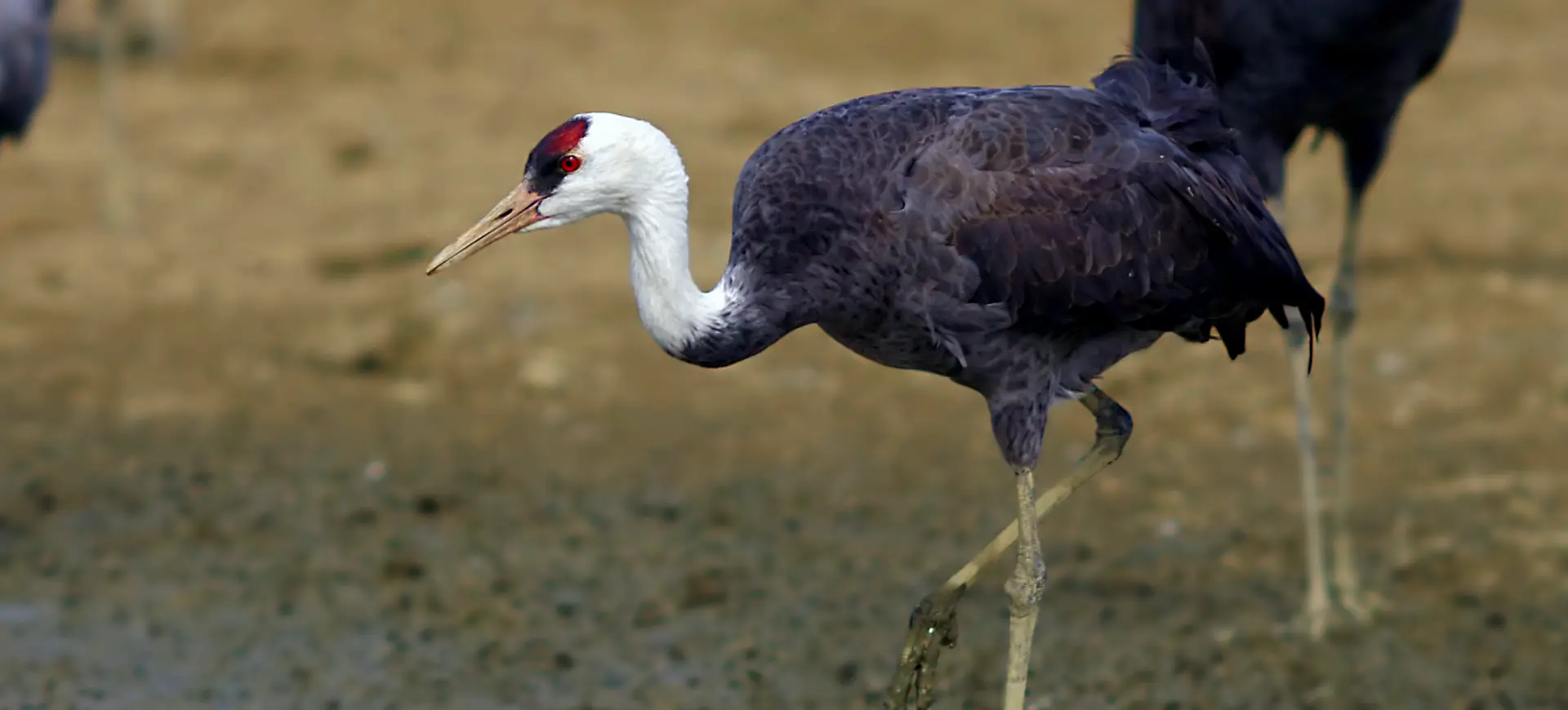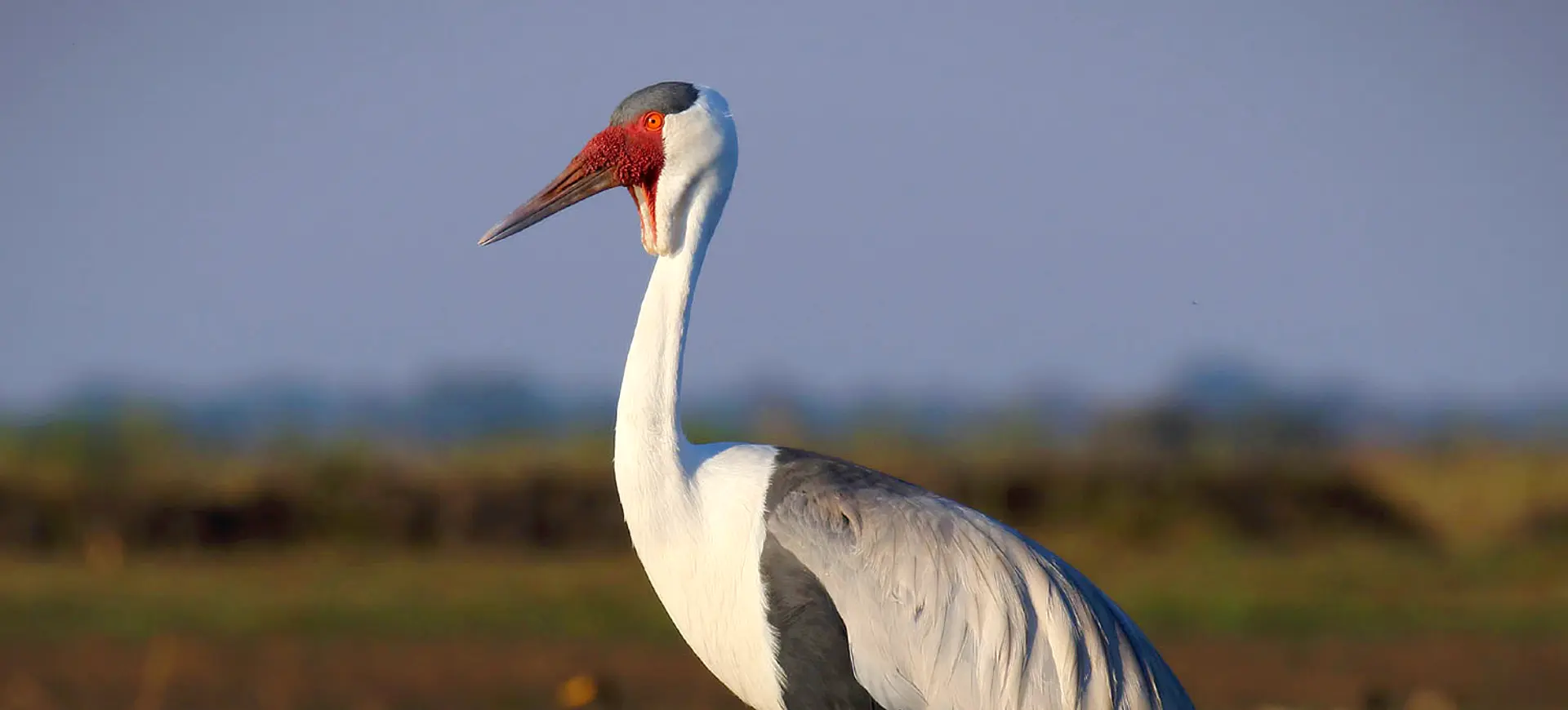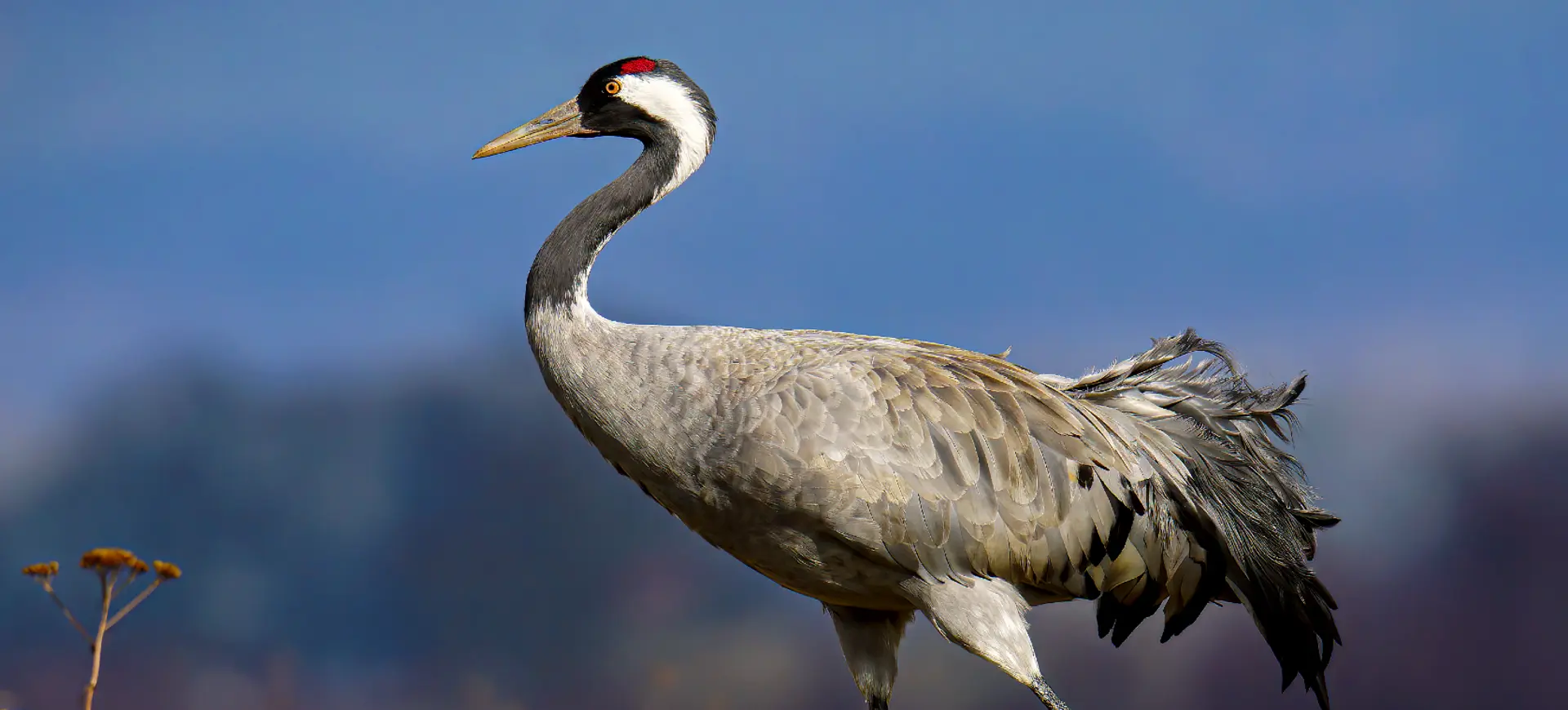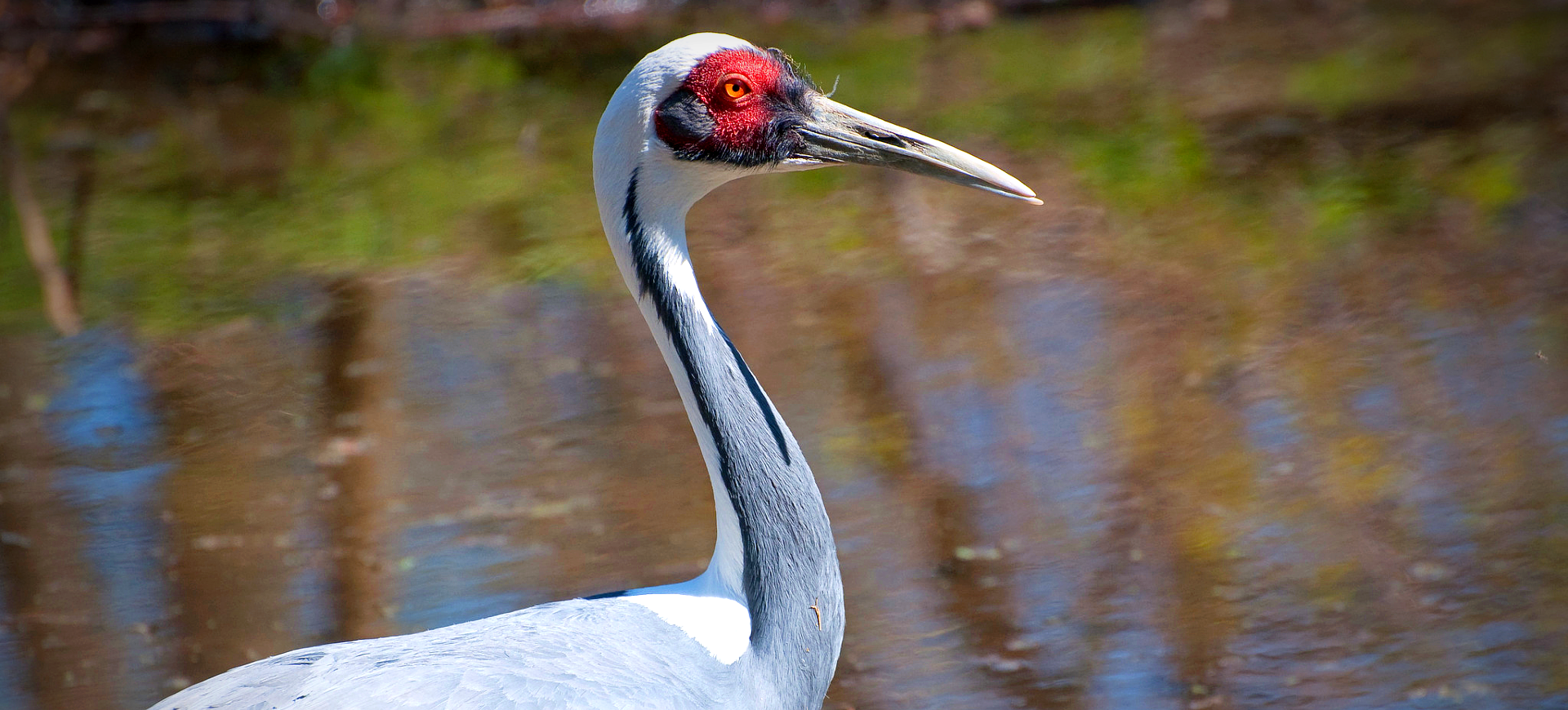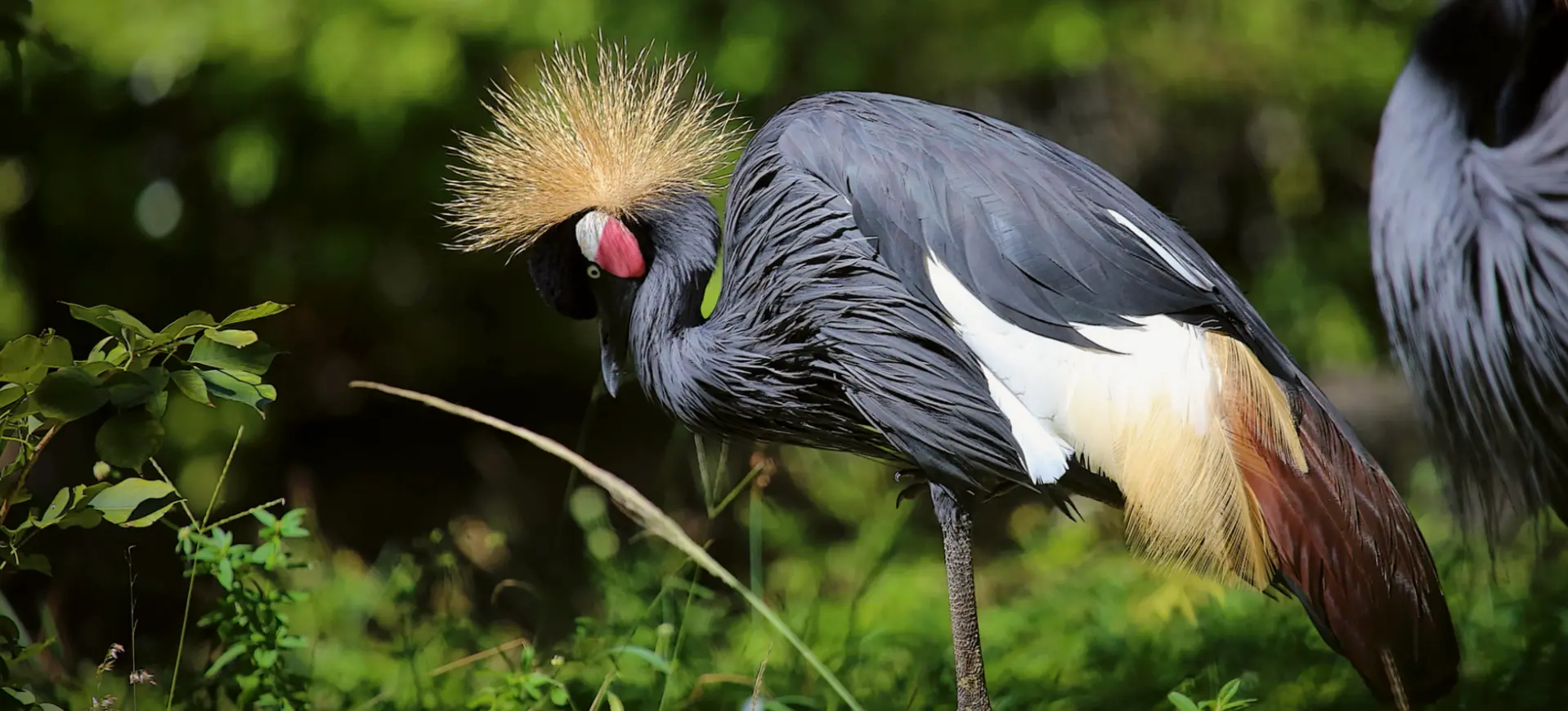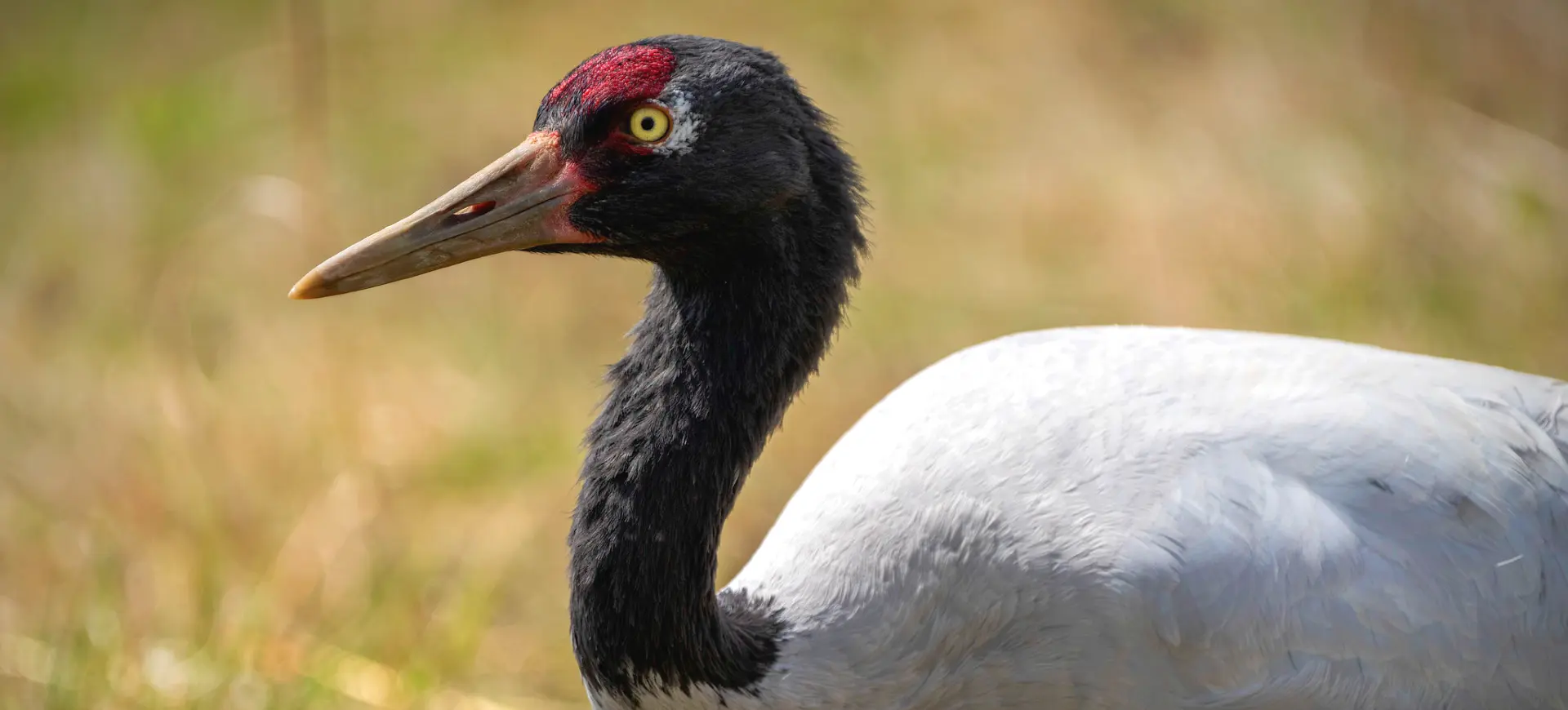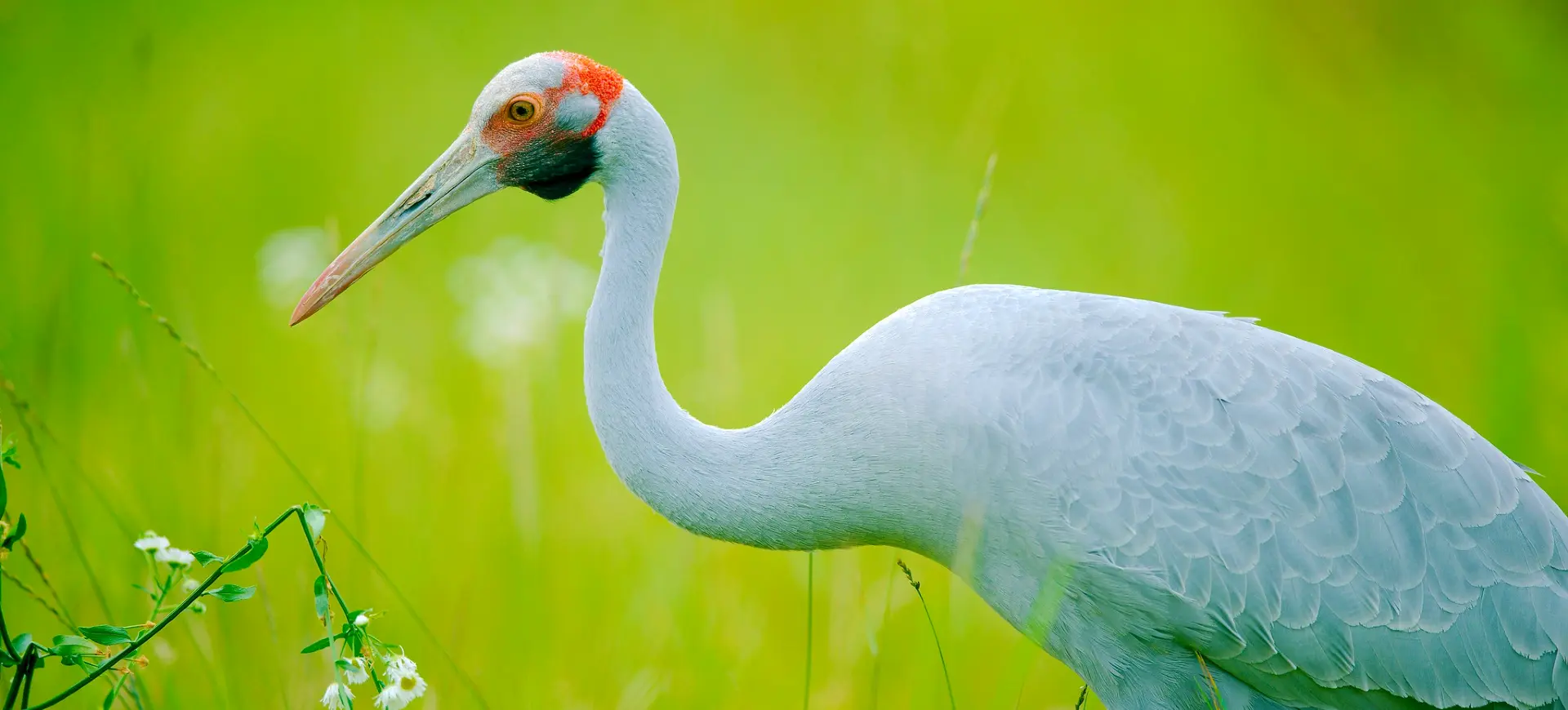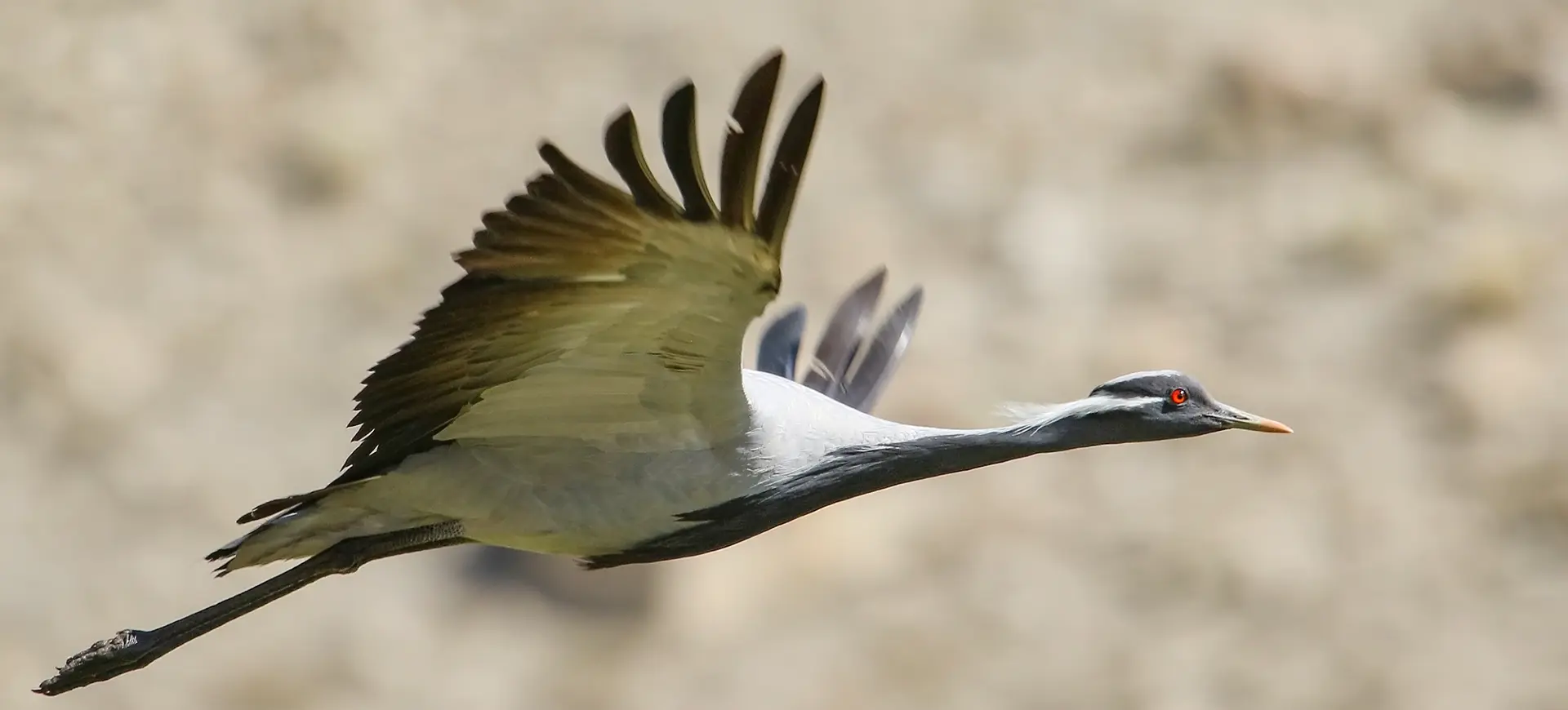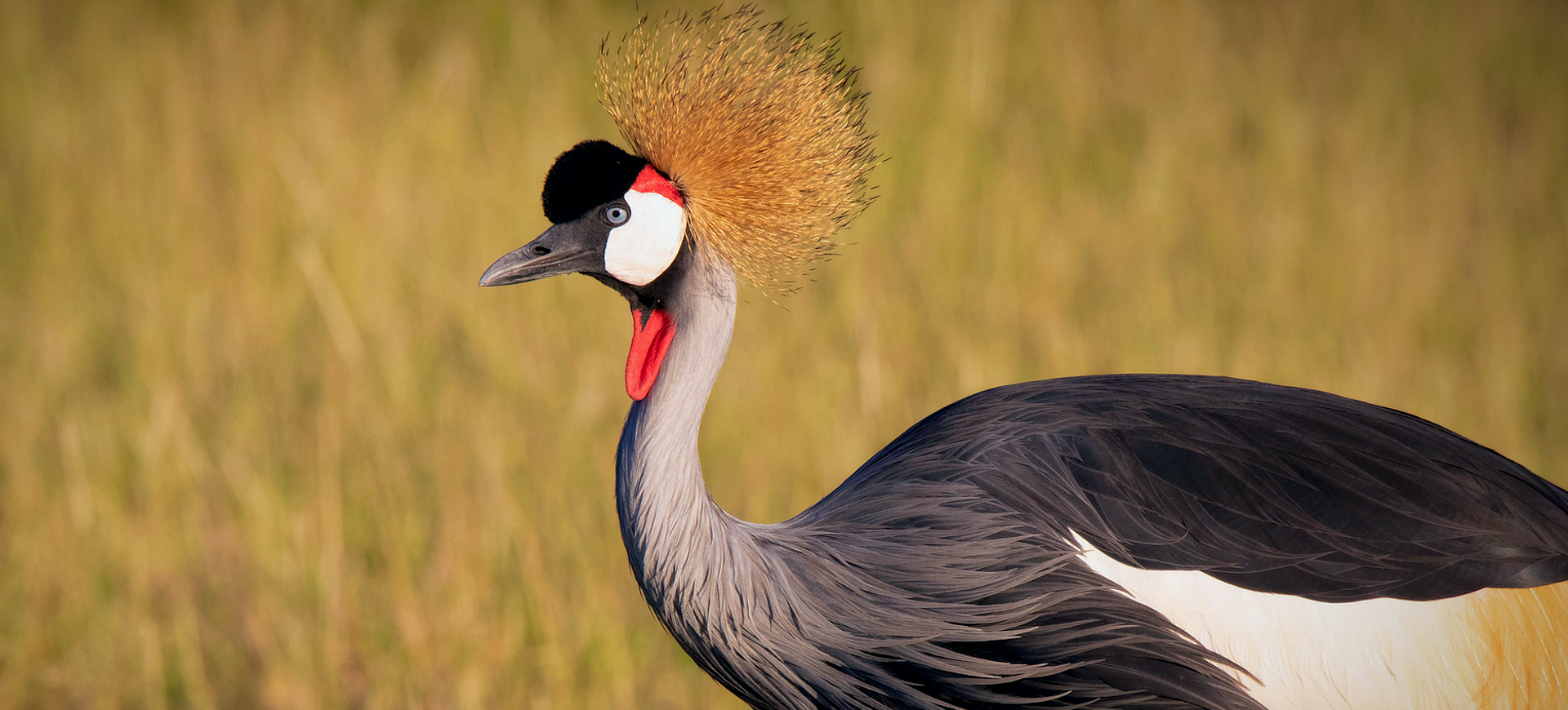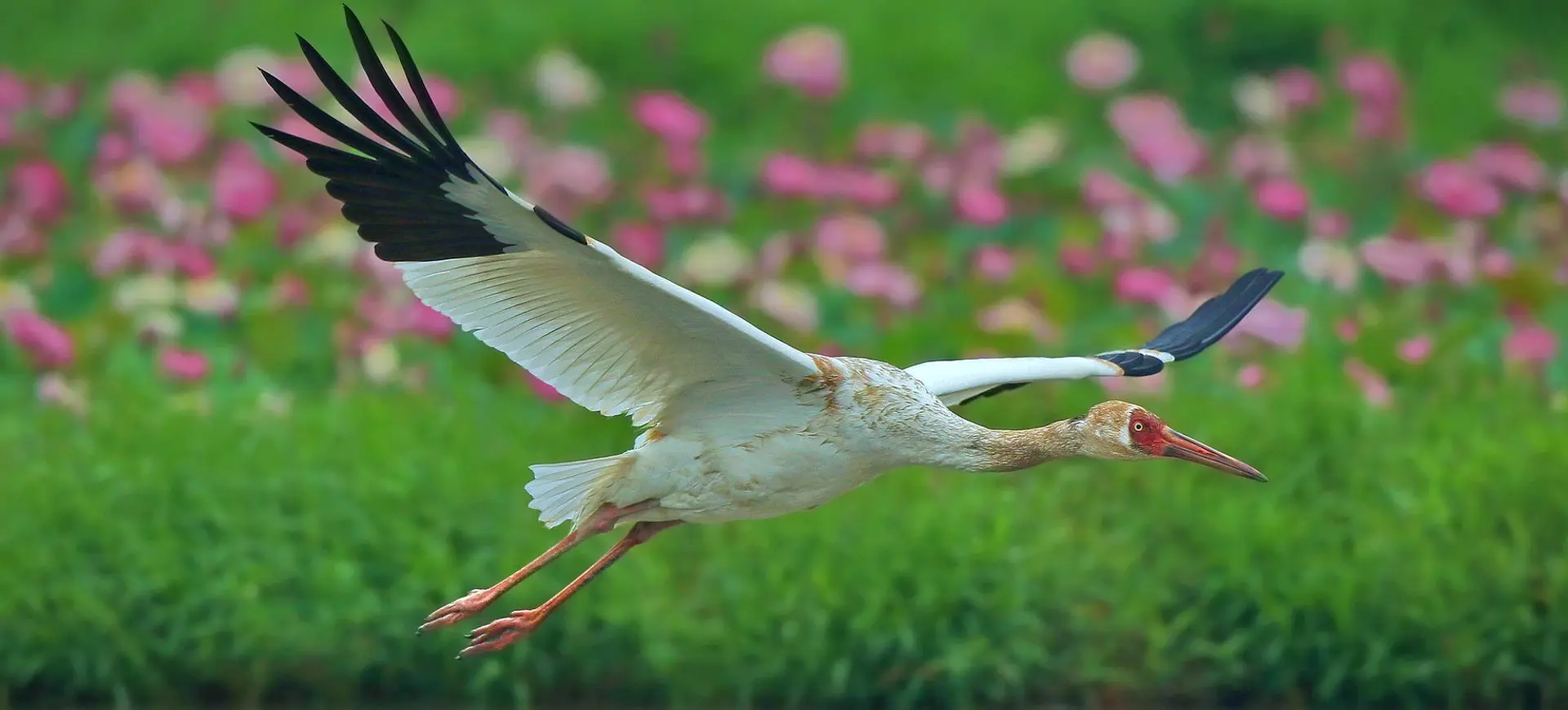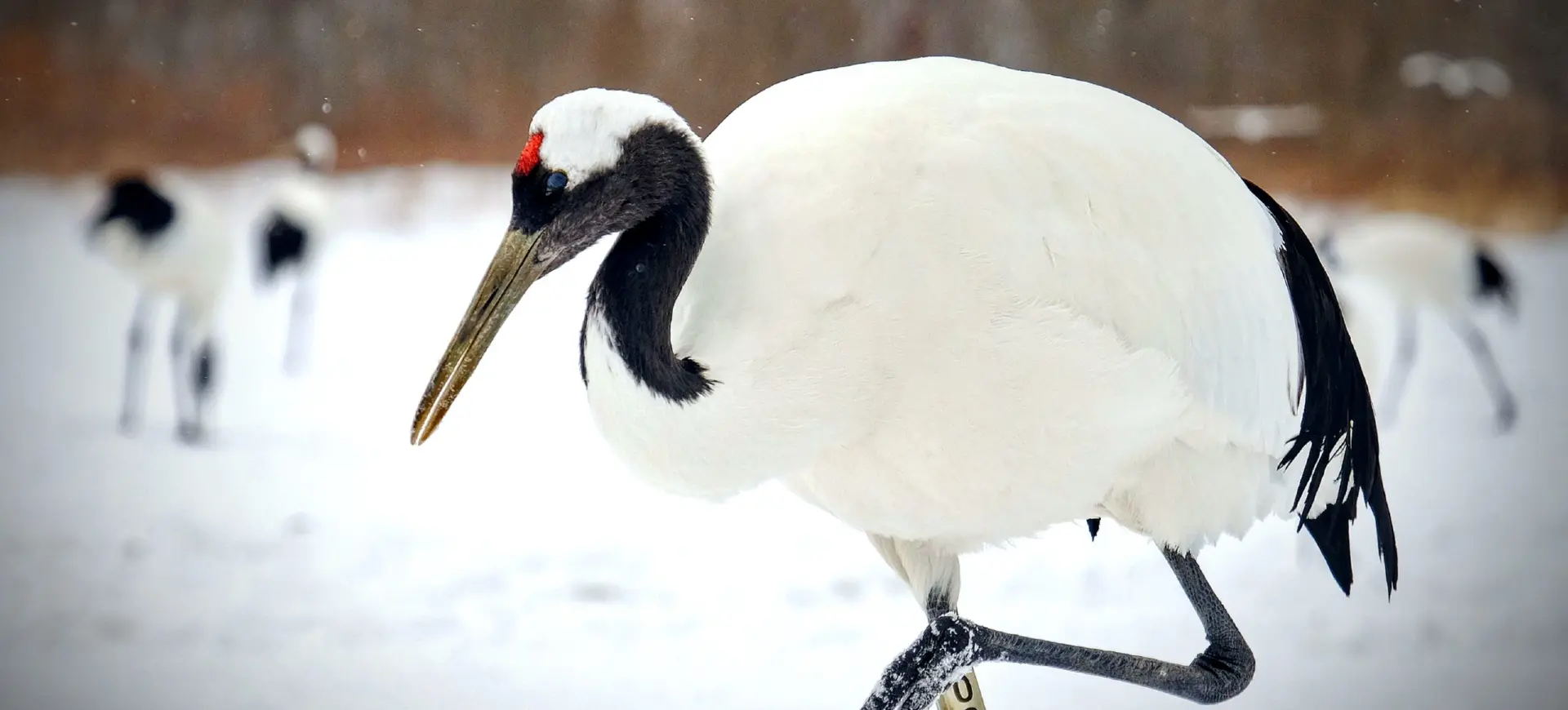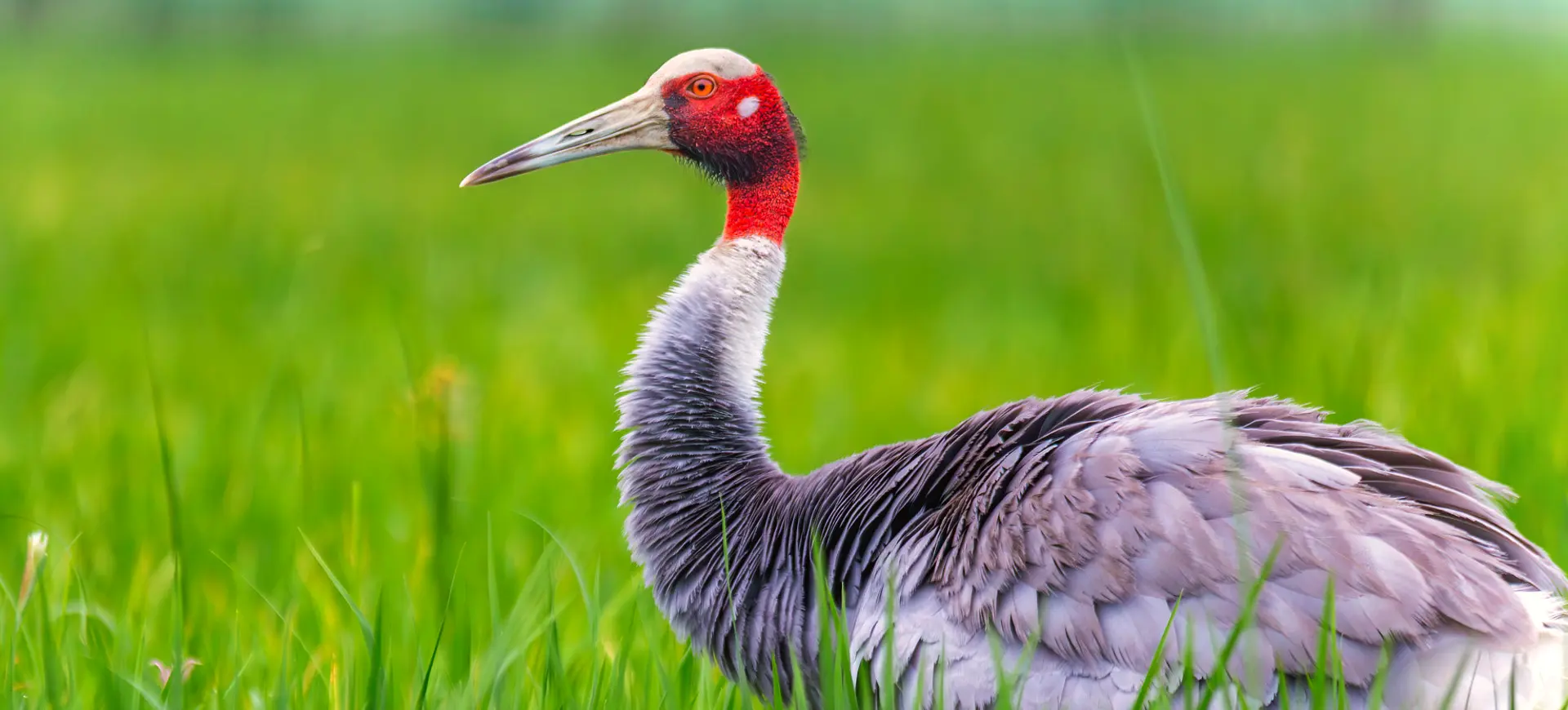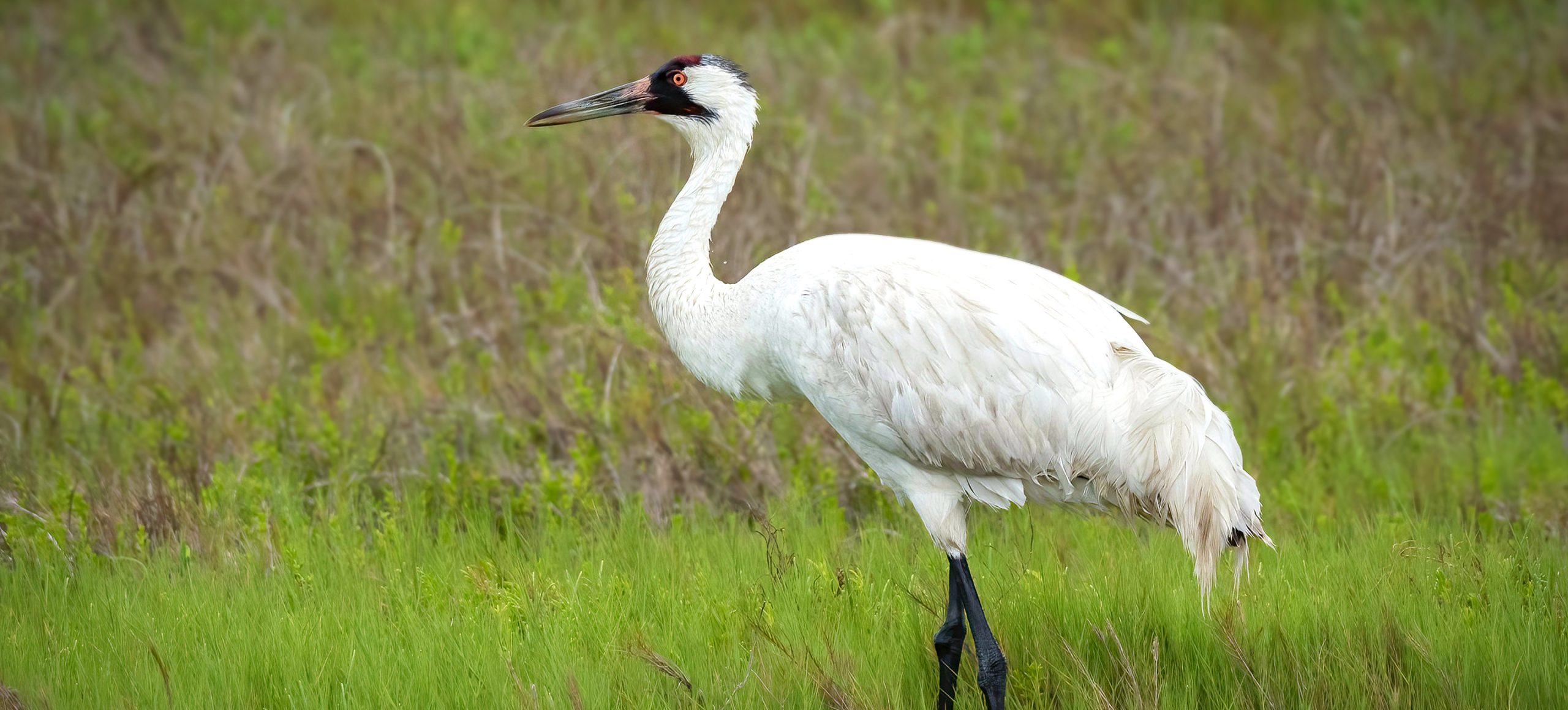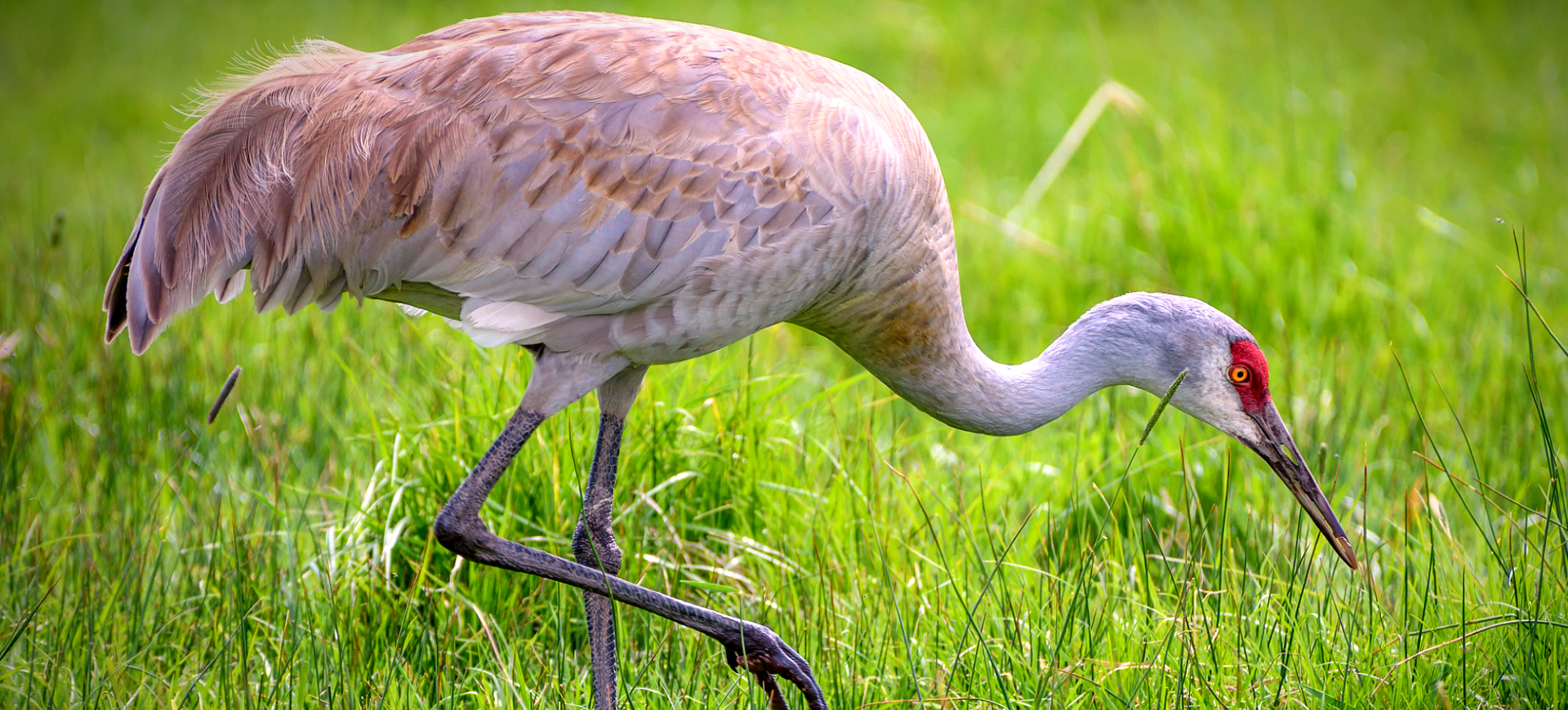Overview
The Blue Crane, also known as the Stanley Crane or Paradise Crane, is a bird belonging to the crane family Gruidae. It is particularly notable for its striking appearance, characterized by a pale blue-gray color, which becomes darker on the upper head, neck, and nape. The Blue Crane is the national bird of South Africa and is revered for its grace and the elegance of its mating dance. Standing at about four feet, it is the smallest crane in the African region and is known for its long wings and a distinctive tail of elongated, wispy feathers.
The Blue Crane has a specialized habitat preference, largely residing in dry grasslands where it forages for food. It is also found in agricultural lands but avoids tree-dominated areas. This species exhibits a strong fidelity to its breeding sites, often returning to the same location year after year. The mating dance of the Blue Crane is a spectacular display involving jumping, bowing, and wing-flapping, a characteristic behavior shared among many crane species.
Blue Cranes form strong pair bonds, and their mating rituals are integral to this process. During the breeding season, pairs engage in elaborate synchronized dancing, strengthening their bond and preparing for nesting. Outside the breeding season, they are less social, often found alone or in small family groups. However, they can form larger flocks during migration, sometimes numbering in the hundreds.
Taxonomy
Kingdom
Phylum
Class
Order
Family
Genus
Species
Type
Current distribution:
The Blue Crane is predominantly found in South Africa, with the largest populations in the Karoo and the Eastern Cape. Smaller, isolated populations exist in neighboring countries such as Namibia and Lesotho. The species has experienced a range contraction in historical times, largely due to habitat loss and changes in agricultural practices.
The current distribution is fragmented, with the largest numbers found in protected areas and private farmlands that practice sustainable land use. In some regions, the crane's presence is seasonal, influenced by changes in food availability and breeding requirements. Migration patterns are not extensive, but local movements are observed, particularly in response to changing environmental conditions and food sources.
Physical Description:
The Blue Crane is distinguished by its blue-gray plumage, slightly paler neck and darker head. It has a prominent head crown of stiff, feathered bristles, and its long, elegant neck enhances its stately appearance. The bird’s eyes are pale yellow, and it has a short, dark bill. The most distinctive feature is its long, thin, and wispy tail feathers, which trail behind it in flight and are used in elaborate courtship dances.
Despite being the smallest African crane, the Blue Crane still boasts a considerable size. Its long legs are adapted for walking through grasslands, and its wings are broad and powerful, suited for long-distance flights. The bird’s overall structure is streamlined and efficient, reflecting its lifestyle as a terrestrial forager and a proficient flier. The crane’s posture is upright and dignified, often standing motionless for long periods while surveying its surroundings.

Lifespan: Wild: ~20 Years || Captivity: ~30 Years

Weight: Male: 9-12 lbs (4-5.5 kg) || Female: 9-12 lbs (4-5.5 kg)

Length: Male & Female: 39-45 in (100-115 cm)

Height: Male: 42-48 in (107-122 cm) || Female: 42-48 in (107-122 cm)

Wingspan: Male & Female: 71-79 in (180-200 cm)

Top Speed: 22 mph (35 km/h)
Characteristic:
Native Habitat:
The Blue Crane is native to the southern regions of Africa, particularly South Africa. It is predominantly found in dry grasslands, which provide ideal conditions for foraging and nesting. These open areas allow for easy detection of predators and are rich in the crane’s preferred food sources. The bird is also known to inhabit agricultural lands, where it can find ample food but also faces the risk of human-wildlife conflict.
Apart from grasslands and farmlands, Blue Cranes occasionally venture into wetland areas, although they are not as dependent on wetlands as some other crane species. They prefer shallow water bodies for drinking and sometimes for foraging. The crane’s habitat choice is influenced by the availability of food resources, safety from predators, and suitable sites for breeding and raising their young.
Biogeographical Realms:
Continents:
Diet:
Diet & Feeding Habits:
The Blue Crane is predominantly omnivorous, feeding on various food items. Its diet includes insects, especially grasshoppers and crickets, crucial food sources, especially during breeding. The crane also consumes other invertebrates, small vertebrates like frogs, lizards, snakes, and various plant materials, including seeds, roots, and tubers. Foraging occurs in its grassland habitat, where it uses its bill to peck and probe the ground for food.
In agricultural areas, Blue Cranes have adapted to feed on crops, including maize and wheat, which can sometimes bring them into conflict with farmers. They are ground feeders often seen walking slowly through fields or grasslands for food. Their feeding habits are daily, and they are most active during the cooler parts of the day. During the breeding season, their diet changes slightly, with a higher intake of protein-rich insects to aid in egg production.
Mating Behavior:
Mating Description:
The mating system of the Blue Crane is monogamous, with pairs forming long-term bonds. These bonds are reinforced through elaborate courtship displays, including dancing, bowing, and leaping. These displays are crucial for pair formation and maintenance and are performed with great vigor and coordination. The dances involve synchronized movements, where both males and females participate, showcasing their suitability as mates.
Breeding usually takes place during the wet season when food resources are abundant. Nesting sites are chosen in secluded areas, often in tall grass or among shrubs for protection. The nest construction is a joint effort, with both partners gathering materials. The female typically lays two eggs, and both parents are involved in the incubation and rearing of the chicks. The chicks are precocial, meaning they are relatively mature and mobile from hatching. However, they remain dependent on their parents for protection and feeding for several months. The family unit stays together until the next breeding season, and the juvenile cranes may stay with their parents for extended periods before establishing their territories.
Reproduction Season:
Birth Type:
Pregnancy Duration:
Female Name:
Male Name:
Baby Name:
Social Structure Description:
The Blue Crane is known for its strong pair bonds, with pairs often staying together for many years. These bonds are reinforced through their elaborate courtship dances and shared parenting responsibilities. Blue Cranes can be found in small flocks outside the breeding season, although they are not as social as some other crane species. These flocks may consist of non-breeding individuals or family groups, and they often forage and roost together.
Blue Cranes maintain a territory in their natural habitat in which they defend against other cranes, especially during the breeding season. The size of these territories varies depending on the availability of resources and the density of the crane population. The social structure of the Blue Crane is characterized by a balance between pair bonding and flocking behavior, with the extent of social interaction varying depending on the season and breeding status. Establishing long-term pair bonds and family units is crucial for the species’ reproductive success. At the same time, flocking provides safety in numbers, especially in areas with abundant food resources.
Groups:
Conservation Status:
Population Trend:
The Blue Crane population is estimated at around 25,000 to 30,000 individuals, primarily in South Africa. This population is experiencing a gradual decline, primarily due to habitat loss, human disturbance, and agricultural expansion. The crane’s reliance on specific habitat types makes it particularly vulnerable to land-use changes. Conservation efforts are focused on habitat protection and management to halt and reverse the population decline.
While the species is not extensively hunted, it faces threats from unintentional poisoning, collision with power lines, and ingestion of agricultural pesticides. The cranes have adapted to modified landscapes in some areas, but this brings challenges, including conflicts with farmers. The fragmented nature of their populations also presents challenges for gene flow and long-term viability. Conservationists are actively engaged in research, monitoring, and community involvement to protect this species.
Population Threats:
Habitat loss and fragmentation are the most significant threats to the Blue Crane. Agricultural expansion and land development have reduced and altered their natural grassland habitats. The conversion of grasslands to croplands and urban areas directly impacts their feeding and breeding grounds. Additionally, the use of pesticides and chemicals in agriculture can lead to poisoning and reduced food availability.
Collisions with power lines are a notable threat, as cranes can fly into wires, especially in poor visibility conditions. Unintentional poisoning from baits intended for other wildlife and lead poisoning from ingesting spent ammunition in hunting areas also contribute to mortality. Climate change is an emerging threat, potentially altering the crane’s habitat and food resources. Effective conservation requires addressing these threats through habitat protection, sustainable agricultural practices, and awareness programs.
Conservation Efforts:
Conservation efforts for the Blue Crane involve habitat protection, restoration, public awareness, and education campaigns. Protected areas and nature reserves are crucial in providing safe habitats for the species. Efforts are also made to work with farmers and landowners to promote crane-friendly agricultural practices, including reducing pesticide use and maintaining natural grasslands.
Initiatives have been implemented to reduce power line collisions, such as marking power lines to increase their visibility to flying birds. Conservation organizations are also involved in rescue and rehabilitation programs for injured Blue Cranes, providing medical care and facilitating their return to the wild. International collaborations and partnerships are crucial in ensuring the long-term survival of the species, with a focus on research, monitoring, and sharing best practices in crane conservation.
Additional Resources:
Fun Facts
- The Blue Crane is the national bird of South Africa, symbolizing grace and elegance.
- Unlike many other crane species, Blue Cranes do not engage in long-distance migration but may perform seasonal movements within their range.
- Their elaborate courtship dances are not only for attracting mates but also serve to strengthen pair bonds.
- Blue Cranes have a distinctive, loud trumpeting call that can be heard long distances.
- They are one of the smaller crane species but are known for their impressive wingspan.
- Blue Crane chicks are precocial, relatively mature and mobile shortly after hatching.
- The species is featured on South Africa’s 5-cent coin.
- In some African cultures, the Blue Crane is revered and considered a symbol of good fortune.
- Blue Cranes can live longer in captivity, sometimes up to 30 years of age.
- The bird’s unique bare skin patch can change color during breeding.














